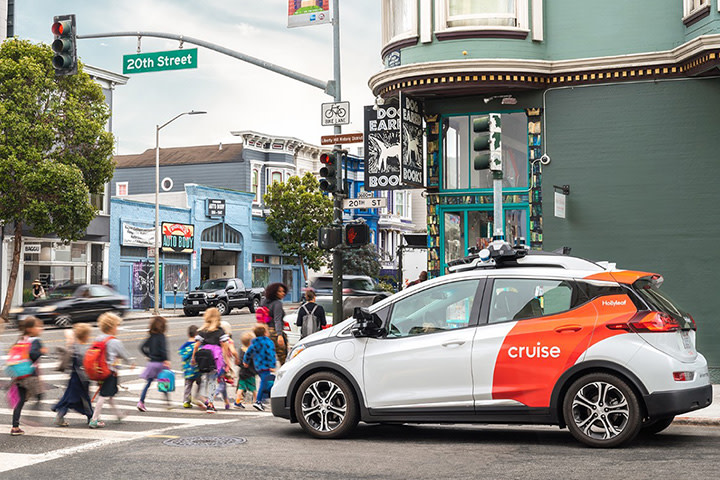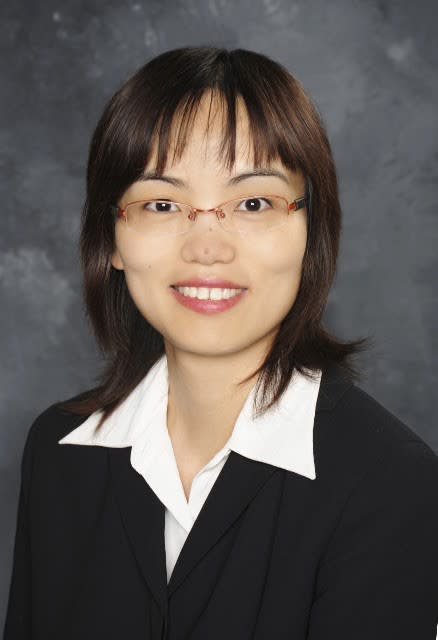Blog Post
6.10.2020
Meet Louise Zhang, Cruise’s New VP of Safety & Systems
Share

In the United States alone, nearly 40,000 Americans die in car crashes every year. But the tragedy of that figure is what the majority of those crashes have in common: human error.
At Cruise, we are working to challenge this status quo. Our vision is to develop an all-electric, self-driving, purpose-built transportation service that is safer for not just people, but also the planet. In doing so, we strive to develop self-driving technology with superhuman levels of performance and safety.

In pursuit of our mission, safety is paramount in everything we do, including how we build our leadership team. Last month, we welcomed Regina E. Dugan to our board of directors, and now we’re excited to welcome Dr. Louise Zhang as our new VP of Product Safety. Louise has dedicated her career to making cars and roads safer, and her experience in building aspirational, mission-critical technology makes her a perfect fit for Cruise.
In the below Q&A, Louise shares more on her safety mindset and commitment to making roads safer with Cruise’s self-driving technology.
You’ve dedicated your career to making cars and roads safer and have a long track record of success in the auto industry. Can you share a little bit about your background and what inspired you to get into this field?
I started at Delphi in the vehicle safety department and quickly became fascinated by the technology and the social impact of the work. This experience defined my career and I’ve been focusing on vehicle safety ever since. After being exposed throughout my career to everything from crash accident field data analysis, computer simulation of life-saving safety technologies, and hands-on development of the hardware and systems, to crash testing and validation, forensic engineering of real-world accidents and functional safety analysis of the electrical systems and software, the world of safety becomes more and more tangible. All of these dots connect to form a line around vehicle safety.
With so much progress in technology and road safety, why do you think road fatalities continue at such alarming rates?
While cars are getting safer, the drivers are not. It took about 20 years for safety technologies such as stronger vehicle body structures, smarter airbags and more effective seat belts to become ubiquitous in vehicle fleets and significantly reduce crash fatalities. But it only took less than five years for smartphones to penetrate people’s lives, resulting in increased driver distraction. While we’ve seen crash fatality rates go down since the 1990s, we’re still seeing that 94% of car crashes are caused by human errors.
What excites you about self-driving?
It’s a very personal experience. I have two school-age kids so most of my weekends are spent driving them around. Because they are both young, I can’t put them in Ubers or Lyft, so that means I spend sometimes hours a day in the car. Reliable self-driving vehicles will set our family free. Someday, we will be able to use self-driving vehicles for transportation with our families as naturally as we use washing machines to do laundry. That’s my dream come true.
From a more professional perspective, self-driving vehicles are a great combination of exciting technologies and responsible business models. It’s rare to have a problem that’s so impactful to the society, and encompasses so many different domains of engineering. Now is the right time to solve this problem, our current transportation does not fit our needs and the technology to make this dream a reality is maturing. I feel really lucky to have the opportunity to be part of this.
What is your approach to product safety? What are the main differences in developing product safety for self-driving cars versus traditional human-driven vehicles?
In both self-driving and human-driven vehicles there are three elements of product safety: active safety, such as the cameras and radars which help prevent an accident from happening; passive safety, such as vehicle body structure, seat belts and airbags that are meant to protect passengers during an accident; and post-crash safety, such as GM’s OnStar and other post-crash triage and notification technologies that ensure proper level of medical assistance can be delivered promptly. All three are vital in both types of vehicles but the mindset for system development in self-driving versus human-driven vehicles is very different.
In the case of human-driven vehicles, it’s a guarantee that drivers will be distracted, tired, frustrated, or rushed, making accidents inevitable. This means that passive safety, protecting passengers during a crash, has historically been the focus of safety development. With self-driving cars, however, it’s possible to avoid these crashes all together with the right technology in place, making active safety product development the main focus.
We will continue to advance all three of these areas in order to deliver the safest self-driving technology — you cannot have one without the other. For example, as the configuration of self-driving cars continues to change and things like the steering wheel are no longer needed, it poses an interesting opportunity to reimagine how the industry traditionally thinks about passive safety. And without a human driver to rely on as a fall-back when systems do not work properly, self-driving vehicles have much higher demand on system reliability and redundancy. In addition, AVs collect a huge amount of vehicle data, including in crash incidents, which makes enhanced post-crash safety a natural by-product of self-driving because it allows for more accurate and timely delivery of the correct medical equipment and personnel that’s needed. But active safety is where I think we will see the most technical innovation in ensuring that AVs are better than human drivers.

Why did you join Cruise?
It takes many great minds working together in a productive way to solve such a difficult problem as self-driving vehicles. Cruise has the right talent and company culture to achieve this ambitious goal.I’m impressed by the passion and professionalism that Cruisers bring to achieving our mission to deliver the world’s safest self-driving vehicle. Its mission-driven team has the tenacity to stay on the course, the determination to solve the problems, and the integrity to deploy safely. I am so excited to now be a part of this effort.
About Dr. Louise Zhang, PhD
Dr. Louise Zhang is Cruise’s Vice President of Product Safety. She is responsible for extending Cruise’s safety validation capabilities and developing innovative safety solutions and best practices across hardware and software.Louise has dedicated her career to making cars and roads safer. Before Cruise, Louise was Senior Director of Engineering at Lucid Motors where she oversaw overall vehicle safety and regulatory compliance. Prior to that, she was the head of Tesla’s Vehicle Safety Team. Under her leadership, Tesla vehicles achieved five-star safety ratings in US NCAP and Euro NCAP. Before moving to Silicon Valley, Louise led Delphi Corporation’s safety system integration projects with Chinese OEMs in Shanghai, China.Outside of the automotive industry, Louise has worked as a forensic consultant, advising attorneys on litigation involving complex real-world crashes.Louise holds a Ph.D. in Mechanical Engineering from Missouri University of Science and Technology.